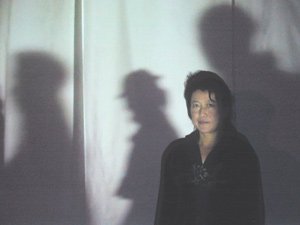
Rating: NNNNN
WATCHER, by Millie Chen, on the windows of 6, 35, 39 and 91 D’Arcy

This series of 10 video vignettes by well-known multimedia artist Chen evokes the diverse cultural history of the area, combining historical fact, fanciful recreation, personal recollection and autobiography.
How did this work come about?
It started with the idea of voyeurism — not voyeurism in the creepy sense, but in the sense of genuine curiosity about how people are living.
When I was little girl of about 10, I ran away from home. I was determined to stay away, but I kept looking into windows and I got homesick. I guess that was one of the starting points of this piece.
You could say it’s an attempt at a healthy, civic-building type of voyeurism as opposed to the sort of unhealthy media-inspired voyeurism we see on reality television.
How was your childhood part of the inspiration?
D’Arcy was the first street I lived on as a new immigrant child of five, so there are a lot of memories associated with my experience in an immigrant family. I lost my older sister during that time as well, to a car accident, so it’s trauma as well, the trauma of cultural transition and personal loss.
Your piece also addresses the collective history of the neighbourhood.
I spent a lot of time trying to trace the immigration patterns of that area.
The first residents in the 1850s were very diverse, from working-class families all the way up to barristers and bankers and large estate holders. The first wave was mostly anglo, followed by a few Jewish waves in the 1900s, which were followed by Chinese and Vietnamese. It’s largely a Portuguese and Italian neighbourhood now.
I found some clues that part of the Underground Railroad ended in the area. The first Baptist church in Toronto was built near there as a later manifestation of that fleeing slave community.
Both real and imagined stories form part of the video installation. So is it a historical work?
I think the role of art is to ask questions more than it is to present factual details.
I guess the toughest part of making the piece was figuring out what the intersection was between the area’s historical narrative and my personal narrative. You could call the videos contemplative interpretations of the neighbourhood’s history.
So these are short films with characters?
Not exactly. There is a screen or scrim in each piece, with shadowy figures moving behind them that you can just make out. The Watcher from the title is a little girl who appears to be observing things and looking out at the viewers as well.












